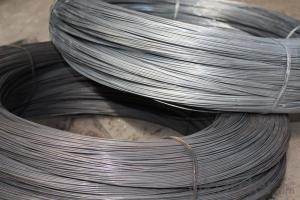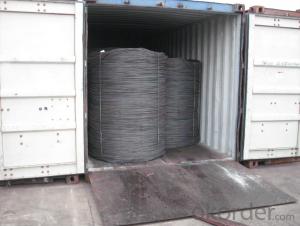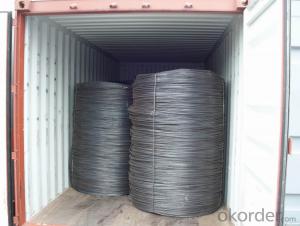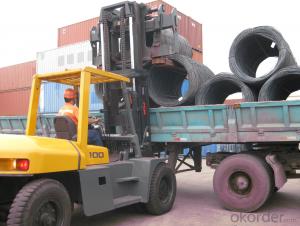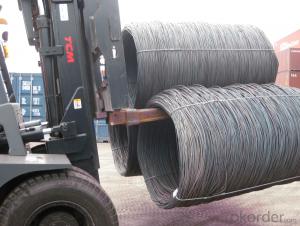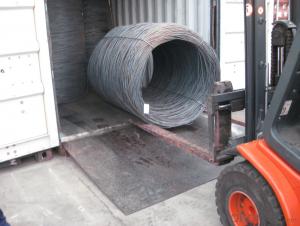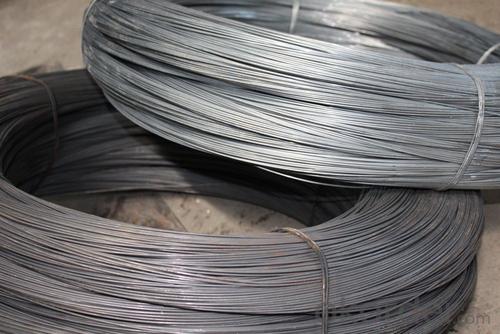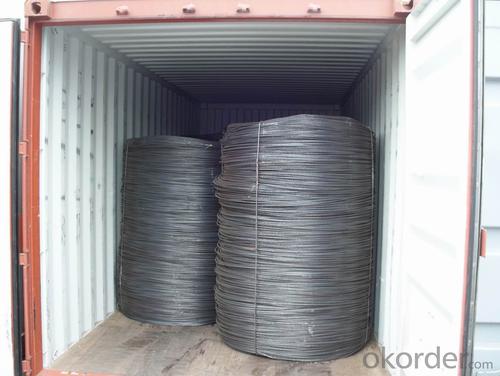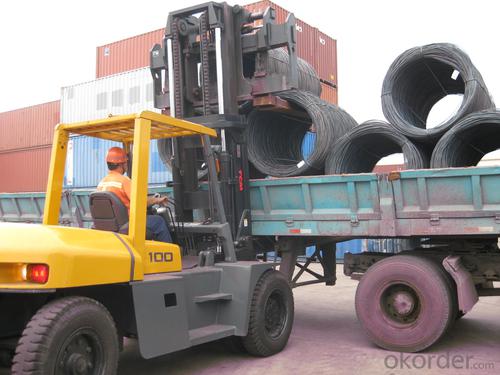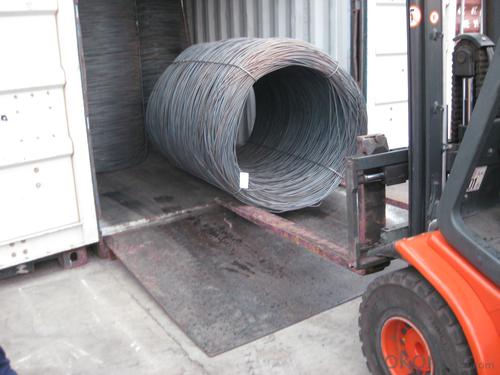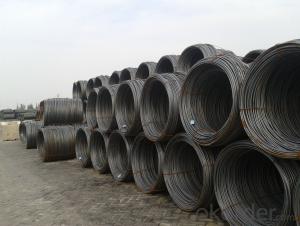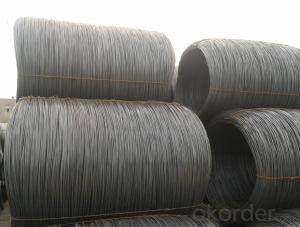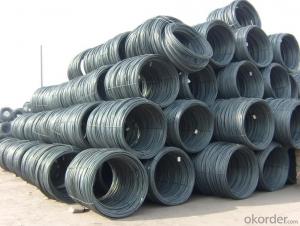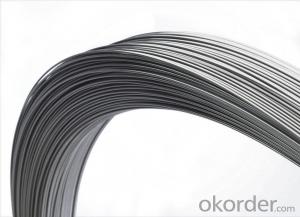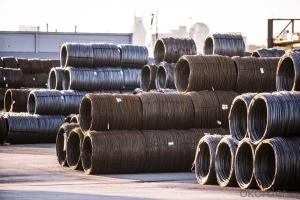SAE1006Cr Carbon Steel Wire Rod 11.5mm for Welding
- Loading Port:
- Shanghai
- Payment Terms:
- TT OR LC
- Min Order Qty:
- 100 m.t
- Supply Capability:
- 30000 m.t/month
OKorder Service Pledge
OKorder Financial Service
You Might Also Like
Specification
Description of SAE1006Cr Carbon Steel Wire Rod 11.5mm for Welding:
OKorder is offering Color Coated Steel Coil Prepainted Steel Coil at great prices with worldwide shipping. Our supplier is a world-class manufacturer of steel, with our products utilized the world over. OKorder annually supplies products to European, North American and Asian markets. We provide quotations within 24 hours of receiving an inquiry and guarantee competitive prices.
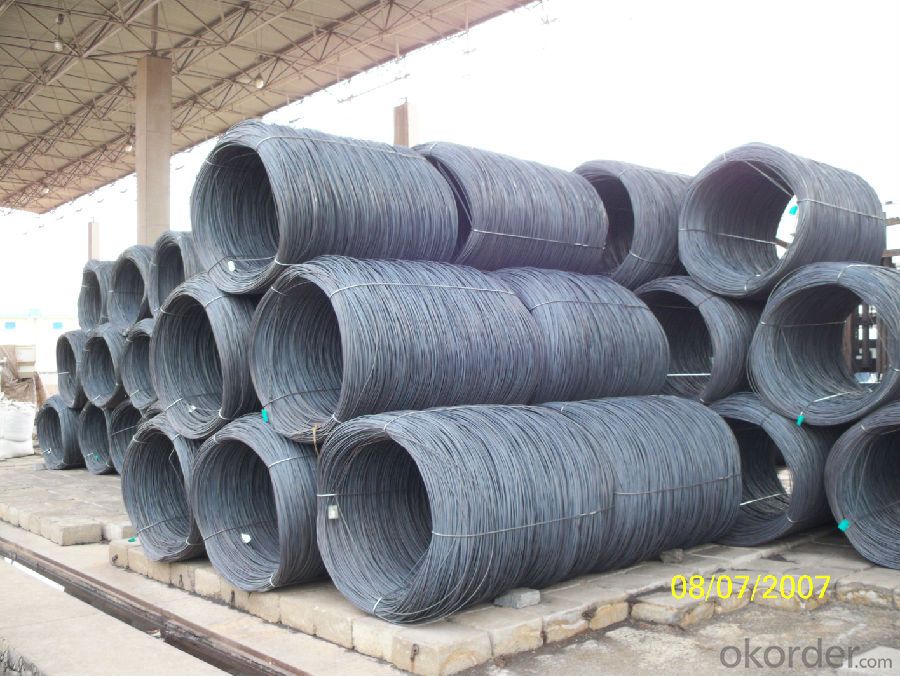
Applications of SAE1006Cr Carbon Steel Wire Rod 11.5mm for Welding:
Color Coated Steel Coil Prepainted Steel Coil are ideal for structural applications and are widely used in the construction of buildings and bridges, and the manufacturing, petrochemical, and transportation industries.
Main Product Features of SAE1006Cr Carbon Steel Wire Rod 11.5mm for Welding:
· Premium quality
· Prompt delivery & seaworthy packing (30 days after receiving deposit)
· Corrosion resistance
· Can be recycled and reused
· Mill test certification
· Professional Service
· Competitive pricing
Specifications of SAE1006Cr Carbon Steel Wire Rod 11.5mm for Welding:
PPGI:
1, Introduction: Color coated steel coils(sheets), i. E. PPGI, also called prepainted steel coils(sheets), are made of galvanized steel coils(sheets) with polymer coatings as surface. It's a new enclosure material and building board with characteristics of light-weighted, heat preserved&insulated, easily installed with bright colors.
2, Production Process: Pretreatment(Degreasing)_Drying_Chromating_Paint Basic Oil_Cooling_Drying_Color Coating_Cooling_Film-covering_Rolling Up
3, Characteristics:
Good at corrosion resistence. Besides zinc coating of the basic plate of galvanized steel sheet, the color coating as the surface has double lifetime to ensure better anticorrosion effect.
With excellent cold bending molded manufacturablity, PPGI products can be processed or directly used as final product. As being light-weighted and conveniently transported, they're widly used to replace wood to save energy.
4.There're thousands of colors can be chosen as per different application. Any color plays well in decoration.
No pollution with high recycling rate, PPGI coils and sheets are strongly recommended as enviroment-friendly products by the government.
5, eye bands and 4 circumferential bands in steel, galvanized metal fluted rings on inner and outer edges, galvanized.
| commodity | SAE1006Cr Carbon Steel Wire Rod 11.5mm for Welding |
| Techinical Standard: | JIS G3302-1998, EN10142/10137, ASTM A755 |
| grade | Q195,Q215,Q235,SAE1006,SAE1008 SAE1006Cr |
| Types: | Mesh welding |
| Base metal | galvanized, galvalume, cold rolled steel |
| Thickness | 0.14-1.0mm(0.16-0.8mm is the most advantage thickness) |
| Width | 610/724/820/914/1000/1200/1219/1220/1250mm |
| Type of coating: | PE, SMP, PVDF |
| Zinc coating | Z60-150g/m2 or AZ40-100g/m2 |
| Top painting: | 5 mic. Primer + 15 mc. R. M. P. |
| Back painting: | 5-7 mic. EP |
| Color: | According to RAL standard |
| ID coil | 508mm610mm |
| Coil weight: | 2--3MT |
| Package: | Properly packed for ocean freight exportation in 20'containers |
| Application: | Industrial panels, roofing and siding for painting/automobile |
| Price terms | FOB, CFR, CIF |
| Payment terms | 20%TT in advance+80% TT or irrevocable 80%L/C at sight |
| delivery time | 25 days after recepit of 20% TT |
| Remarks | Insurance is all risks |
| MTC 3.1 will be handed on with shipping documents | |
| We accept SGS certificatation test |
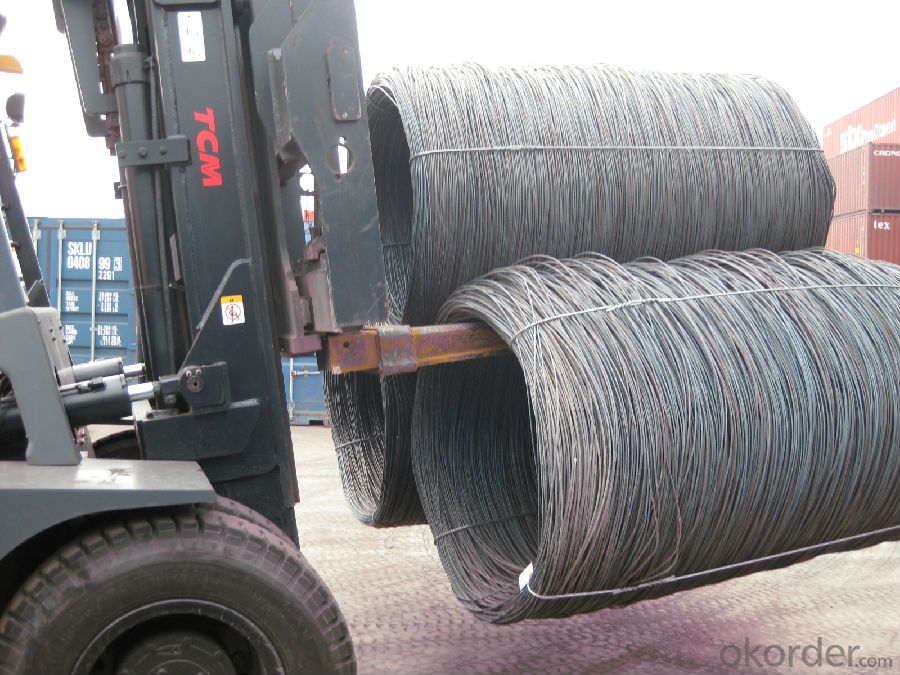
FAQ of SAE1006Cr Carbon Steel Wire Rod 11.5mm for Welding:
Q1: Why buy Materials & Equipment from OKorder.com?
A1: All products offered byOKorder.com are carefully selected from China's most reliable manufacturing enterprises. Through its ISO certifications, OKorder.com adheres to the highest standards and a commitment to supply chain safety and customer satisfaction.
Q2: How do we guarantee the quality of our products?
A2: We have established an advanced quality management system which conducts strict quality tests at every step, from raw materials to the final product. At the same time, we provide extensive follow-up service assurances as required.
Q3: How soon can we receive the product after purchase?
A3: Within three days of placing an order, we will begin production. The specific shipping date is dependent upon international and government factors, but is typically 7 to 10 workdays.
Q4: What makes stainless steel stainless?
A4: Stainless steel must contain at least 10.5 % chromium. It is this element that reacts with the oxygen in the air to form a complex chrome-oxide surface layer that is invisible but strong enough to prevent further oxygen from "staining" (rusting) the surface. Higher levels of chromium and the addition of other alloying elements such as nickel and molybdenum enhance this surface layer and improve the corrosion resistance of the stainless material.
Q5: Can stainless steel rust?
A5: Stainless does not "rust" as you think of regular steel rusting with a red oxide on the surface that flakes off. If you see red rust it is probably due to some iron particles that have contaminated the surface of the stainless steel and it is these iron particles that are rusting. Look at the source of the rusting and see if you can remove it from the surface.
- Q: What are the common applications of pre-stressed concrete steel wire rod?
- Pre-stressed concrete steel wire rods are widely used in various applications due to their high strength and durability. Some of the common applications of pre-stressed concrete steel wire rods are: 1. Buildings and Infrastructure: Pre-stressed concrete steel wire rods are commonly used in the construction of buildings, bridges, highways, and other infrastructure projects. They provide added strength and load-bearing capacity to the structures, making them resistant to bending, cracking, and other forms of structural failure. 2. Post-tensioning Systems: Pre-stressed concrete steel wire rods are extensively used in post-tensioning systems. These systems involve the insertion of pre-stressed steel wire rods into concrete structures and then applying tension to them. This process helps to counteract the tensile forces that concrete structures experience, thereby improving their overall strength and durability. 3. Precast Concrete Products: Pre-stressed concrete steel wire rods are also used in the production of precast concrete products such as beams, columns, slabs, and walls. By incorporating pre-stressed steel wire rods during the manufacturing process, these products gain enhanced strength and resistance to cracking, allowing for longer spans and thinner sections. 4. Retaining Walls: Pre-stressed concrete steel wire rods play a crucial role in the construction of retaining walls. These walls are designed to retain soil and prevent erosion. By integrating pre-stressed steel wire rods into the concrete structure, the retaining walls become more robust, ensuring stability and preventing any potential failure due to the pressure exerted by the retained soil. 5. Seismic Resistant Structures: Pre-stressed concrete steel wire rods are especially valuable in seismic regions where earthquakes are a concern. By incorporating pre-stressed steel wire rods into the concrete elements of buildings and infrastructure, their ability to withstand seismic forces is significantly increased. This helps to minimize damage and ensure the safety of occupants during earthquakes. Overall, the common applications of pre-stressed concrete steel wire rods encompass a wide range of construction projects, where their strength, durability, and ability to withstand various forces are essential.
- Q: How is steel wire rod used in the automotive industry?
- Steel wire rod is extensively used in the automotive industry for various applications. It is primarily utilized to manufacture springs, which are crucial components in vehicles for suspension systems, seat belts, and engine valve springs. Additionally, steel wire rod is used to produce tire reinforcement materials like steel cord, which enhances tire strength and durability. Overall, the automotive industry heavily relies on steel wire rod for its strength, flexibility, and ability to withstand high stress and load conditions.
- Q: How is steel wire rod tested for quality and performance?
- Steel wire rod is tested for quality and performance through a series of rigorous tests and inspections to ensure its compliance with industry standards and customer requirements. These tests are conducted at various stages of the manufacturing process, from the initial raw material to the final product. One common test performed on steel wire rod is the chemical composition analysis. This test determines the presence and quantity of various elements in the steel, such as carbon, manganese, silicon, and sulfur. It is essential to ensure that the steel composition meets the specified standards, as different compositions have different mechanical properties and performance characteristics. Mechanical testing is another crucial aspect of quality and performance evaluation. Tensile strength, yield strength, elongation, and hardness tests are conducted to assess the mechanical properties of the steel wire rod. These tests measure the ability of the rod to withstand stress, deformation, and load-bearing capacity, ensuring it meets the required strength and durability standards. Surface quality inspection is also carried out to detect any defects or irregularities on the surface of the steel wire rod. This includes the examination of the rod's appearance, such as cracks, scratches, or other surface imperfections, which could affect its performance or usability. Furthermore, dimensional and shape inspections are conducted to verify that the steel wire rod meets the specified size, diameter, and shape requirements. This ensures that the rod can be used effectively in various applications and can be easily integrated into the manufacturing processes of the end-user. In addition to these standard tests, other specialized tests may be performed based on specific customer requirements or industry regulations. These tests could include corrosion resistance, fatigue strength, or heat treatment analysis, among others. Overall, the testing of steel wire rod for quality and performance involves a comprehensive evaluation of its chemical composition, mechanical properties, surface quality, and dimensional characteristics. These tests ensure that the rod meets the necessary standards and is suitable for its intended application, providing customers with a reliable and high-performing product.
- Q: What are the different surface defects that can impact the tensile strength of steel wire rod?
- Some of the different surface defects that can impact the tensile strength of steel wire rod include scratches, cracks, pits, and scale. These defects can weaken the structure of the wire rod and reduce its ability to withstand tension, resulting in a lower tensile strength.
- Q: How is steel wire rod used in the manufacturing of wire baskets and containers?
- Wire baskets and containers rely on steel wire rod as a vital material for their manufacturing. This material serves as the main building block for these products. The wire rod is typically made of high-quality steel and is available in different diameters to meet the specific requirements and strength needs of wire baskets and containers. To create wire baskets and containers, the steel wire rod undergoes various manufacturing processes. Initially, it is drawn through a series of dies to decrease its diameter and increase its length. This process, known as wire drawing, refines the wire rod and enhances its tensile strength. After wire drawing, the steel wire rod is straightened and cut into specific lengths, depending on the desired size of the wire baskets and containers. It is then bent, twisted, or welded into the desired shape and structure using specialized machinery and techniques. The high strength and durability of steel wire rod make it an ideal material for manufacturing wire baskets and containers. These products require robust construction to withstand heavy loads and resist bending or deformation. Steel wire rod provides the necessary strength and rigidity, ensuring that wire baskets and containers can safely hold and transport various items. Moreover, the properties of steel wire rod make it highly resistant to corrosion and wear, guaranteeing the longevity of wire baskets and containers, even in harsh environments. This is particularly important for applications such as storing or transporting goods in industries like agriculture, manufacturing, or logistics. Aside from its structural properties, steel wire rod also offers design versatility. It can be easily shaped and sized to meet specific customer requirements, enabling manufacturers to create wire baskets and containers of various shapes and sizes. Whether it's a simple open-top basket or a complex container with dividers and handles, steel wire rod can be customized to accommodate diverse needs. Overall, the utilization of steel wire rod in the manufacturing of wire baskets and containers is essential for ensuring their strength, durability, and functionality. Its exceptional properties provide the necessary support and resistance to meet the demands of different industries, making steel wire rod an integral component in their production.
- Q: How is steel wire rod used in the manufacturing of wire forms for communication cables?
- Steel wire rod is an essential component in the manufacturing process of wire forms for communication cables. The steel wire rod serves as the base material from which wires are manufactured. After the steel wire rod is obtained, it undergoes a series of processes to transform it into wire forms suitable for communication cables. Firstly, the steel wire rod is cleaned and inspected for any defects or impurities. This ensures that the resulting wire forms are of the highest quality and meet the required standards. Once cleaned, the steel wire rod is then heated to a specific temperature and passed through a series of dies. This process, known as drawing, reduces the diameter of the wire rod while increasing its length. After the drawing process, the steel wire rod is further processed to enhance its mechanical properties. This may include annealing, a heat treatment process that increases the wire's flexibility and reduces its brittleness. Additionally, the wire may undergo various surface treatments to improve its resistance to corrosion or to provide insulation. Once the wire forms are manufactured, they are used in the production of communication cables. These wire forms can be used as conductive elements within the cables, allowing the transmission of electrical signals. The wire forms may also be utilized as structural components, providing strength and support to the cables. In the manufacturing of communication cables, the steel wire rod ensures the production of high-quality wire forms that meet the specific requirements of these cables. The durability, flexibility, and conductivity of the wire forms contribute to the efficient and reliable transmission of information through the communication cables.
- Q: What are the factors that affect the quality of steel wire rod?
- There are several factors that affect the quality of steel wire rod. These include the composition and purity of the steel used, the manufacturing process and techniques employed, the temperature and speed of cooling during production, the presence of any impurities or defects, and the level of precision and control in shaping and finishing the wire rod. Additionally, the quality of raw materials, such as iron ore, and the expertise and experience of the manufacturer can also greatly impact the quality of the steel wire rod.
- Q: How are steel wire rods used in the manufacturing of tire reinforcements?
- Tire reinforcements heavily rely on steel wire rods, as they are vital for providing strength and durability to tires. Their purpose is to guarantee optimal performance and long lifespan. In the tire manufacturing process, steel wire rods are primarily utilized as the primary material to reinforce the tire's inner structure. They are commonly employed to strengthen the tire's carcass, which is responsible for its shape and structural integrity. Typically, steel wire rods are embedded within a layer of rubber known as the tire ply. This involves either weaving or spiraling the rods into the rubber ply, resulting in a robust and stable framework that supports the overall structure of the tire. This reinforcement is essential to maintain the tire's shape, resist deformation, and handle the stress and load it endures during operation. Steel wire rods are favored for tire reinforcements due to their exceptional flexibility and high tensile strength. They possess the capability to endure immense pressure and strain, ensuring the tire remains stable and durable, even in challenging road conditions. Moreover, steel wire rods used in tire manufacturing undergo different treatments and coatings. These treatments enhance their resistance to corrosion and improve their bonding with the rubber compound. Consequently, the rods remain securely embedded within the tire ply, preventing any separation or detachment during use. In conclusion, the significance of steel wire rods cannot be overstated in the manufacturing of tire reinforcements. They provide the necessary strength, stability, and durability required for tires to perform at their best. Utilizing steel wire rods ensures that tires can withstand the various demands of the road, ensuring safety and longevity for drivers and their vehicles.
- Q: How is the steel wire rod market affected by technological advancements?
- Technological advancements have a significant impact on the steel wire rod market. These advancements have revolutionized the production process, resulting in increased efficiency, improved quality, and reduced costs. One of the key technological advancements that have influenced the steel wire rod market is automation. Automation has made the production process faster and more precise, reducing the reliance on manual labor and increasing overall productivity. This has led to increased production capacity and reduced lead times, allowing manufacturers to meet growing market demands. Furthermore, advancements in metallurgy and material science have led to the development of high-performance steel wire rods. These rods possess superior strength, durability, and flexibility properties, making them suitable for a wide range of applications. Technological advancements have enabled manufacturers to produce steel wire rods with precise chemical compositions and microstructures, resulting in improved mechanical properties and enhanced performance. Moreover, technological advancements have also facilitated the development of advanced testing and quality control methods. Manufacturers can now employ non-destructive testing techniques, such as ultrasonic testing and magnetic particle inspection, to ensure the quality and integrity of steel wire rods. These advancements have significantly reduced the risk of defects and failures, resulting in increased customer satisfaction and trust in the market. In addition, technology has also had a positive impact on the distribution and marketing of steel wire rods. E-commerce platforms and digital marketing strategies have made it easier for manufacturers to reach a wider customer base and promote their products globally. This has increased market competitiveness and facilitated the growth of the steel wire rod market. Overall, technological advancements have revolutionized the steel wire rod market by improving production processes, enhancing product quality, reducing costs, and enabling effective distribution and marketing strategies. As technology continues to advance, it is expected that the steel wire rod market will continue to benefit from further innovations, ensuring its sustained growth and competitiveness in the future.
- Q: How is steel wire rod processed into different shapes and sizes?
- Steel wire rod is processed into different shapes and sizes through a series of manufacturing processes. Initially, the wire rod is cleaned and descaled to remove any impurities. It is then heated and passed through a series of rolling mills, which gradually reduce its diameter while increasing its length. The wire is then cooled and coiled onto spools or cut into desired lengths. Further shaping and sizing can be achieved through processes like drawing, annealing, and coating, depending on the intended application of the wire.
Send your message to us
SAE1006Cr Carbon Steel Wire Rod 11.5mm for Welding
- Loading Port:
- Shanghai
- Payment Terms:
- TT OR LC
- Min Order Qty:
- 100 m.t
- Supply Capability:
- 30000 m.t/month
OKorder Service Pledge
OKorder Financial Service
Similar products
Hot products
Hot Searches
Related keywords
